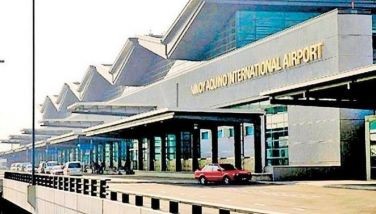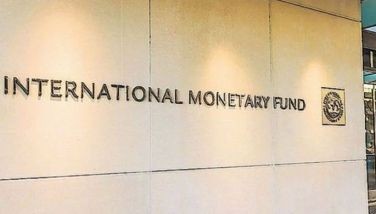Inflation and poverty: Finding ways to stay ahead

While waiting for the President’s economic team to put together a decent and coherent game plan to respond to the ongoing – and very likely prolonged – crisis of high food prices and services, the business sector will have to do anything and all that it can to help ease the burden that our fellow Filipinos are going through.
In 1970, more than half a decade ago, leaders of some of the country’s biggest companies came together to address a worsening poverty crisis affecting more than half of the population and political unrest manifested by the widening reach of dissident activists.
The founding of the Philippine Business for Social Progress (PBSP) that year was considered a bold move in an otherwise fraught and fragile socio-political environment. The business captains who signed up pledged part of their corporate income to a fund that would be committed to alleviating poverty where it would matter most.
PBSP may not have stalled the unfolding of a bigger crisis where massive capital flight by crony capitalists and widespread graft and corruption in government eventually brought the whole economy to its knees, and as history is written, a forceful change in government leadership, but it helped focus attention on development work.
The rise of the so-called non-government organizations (NGOs) over the next decades, as well as the government’s commitment to bring down poverty rates, had slowly chipped away at the percentages of families living below the poverty line. Still, it was slow work.
Growing numbers of the poor
Today, the Philippine Statistics Authority (PSA) estimates that about 20 million or a little less than a fifth of the country’s population are now in the dire clutches of poverty, with about 2.3 million having been recently added as the pandemic reversed their fortunes.
(The Asian Development Bank posted in a Twitter release last month that 23.7 percent of the Philippine population in 2021 lived below the national poverty line, which the PSA calculated at P8,379 a month for a family of five.)
Unfortunately, we may looking at higher poverty levels ahead even as we’re already at the tail end of this pandemic. Today, the new threat comes from the prospect of long-term high inflation brought about by the prolonged Russian-Ukrainian conflict, high oil prices, and the US Federal Reserves’ aggressive interest rate increases.
This presents for our government a likely insurmountable challenge, especially after the new President declared his goal of bringing poverty levels down to nine percent by the end of his term in 2028. Still, his economic planning secretary has waxed optimism in trimming poverty levels lower at 13 percent by 2025, with a full reopening of the economy and a “transformation” of productive sectors to open up new quality jobs and products.
As most businessmen opine, the results of these transformation strategies will likely only be felt only towards the latter part of 2023 or early 2024, that is, if things go smoothly as planned.
Augmenting income
Outside the realm of cold statistical numbers, we must remind ourselves that there are more than 20 million Filipinos who will have to get by with just about P56 a day until the economy gets better.
There are a few options that businesses can look at, starting with ensuring that their own employees are able to survive the higher cost of living arising from fuel prices that are now still more than doubly expensive compared to pre-pandemic days.
Many companies have a flexible mechanism that adjusts employee income outside of the basic salary, often called cost of living allowance (COLA). It’s doubly useful during times when the movement of consumer goods and services are abnormally volatile.
Beyond its core family of workers, business must look at creating new job opportunities, even on a temporary basis, to address unemployment and underemployment while these abnormal times of high inflation persists.
Partnerships with NGOs and local governments must be strengthened, all with the end view of supporting income-generating programs directly targeting community residents who need jobs. Linkages with downstream business partners, many being micro and small entrepreneurial undertakings, should be given additional support.
Perhaps more crucial will be businesses’ commitment to hold off as long as possible any upward price adjustments of products and services. Adopting initiatives that could reduce operating costs, however incremental, would help a lot.
Belt-tightening, when done creatively and without sacrificing product quality, can successfully be implemented by effectively identifying strategic and non-strategic spending in the company budget.
Staying above the poverty line
For the rest of Filipino families who have managed to remain above the poverty line, but are facing the harsh reality of reduced spending because of all the high food prices and transportation costs, it’s also time to start thinking of ways to cope.
Car pooling and similar initiatives are some old practices that need to be reexamined if only to soften the blow of high fuel prices. Similarly, coming up with energy-saving measures in the household to mitigate power rate increases should be seriously studied.
Finally, on food spending, the budget for dining out will have to be scaled down, as with other “family bonding” activities, to add to savings in the household budget to replace a family lunch or dinner trip to a favorite fast-food outlet.
I’m sure there are more ways you can think of. If it’s any consolation, this crisis of high inflation can be survived, even if it means giving up some of those comforts we have grown accustomed to.
Facebook and Twitter
We are actively using two social networking websites to reach out more often and even interact with and engage our readers, friends and colleagues in the various areas of interest that I tackle in my column. Please like us on www.facebook.com/ReyGamboa and follow us on www.twitter.com/ReyGamboa.
Should you wish to share any insights, write me at Link Edge, 25th Floor, 139 Corporate Center, Valero Street, Salcedo Village, 1227 Makati City. Or e-mail me at [email protected]. For a compilation of previous articles, visit www.BizlinksPhilippines.net.
- Latest
- Trending































